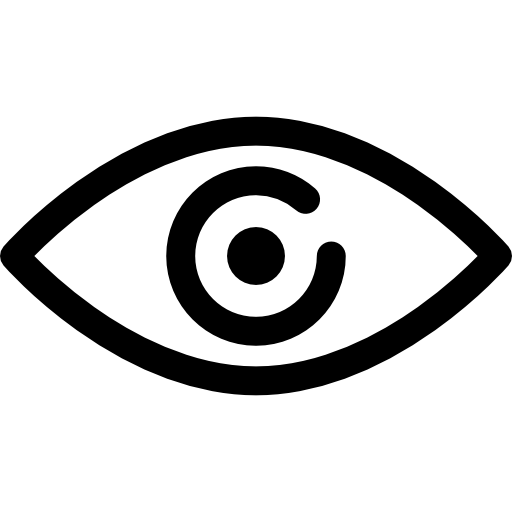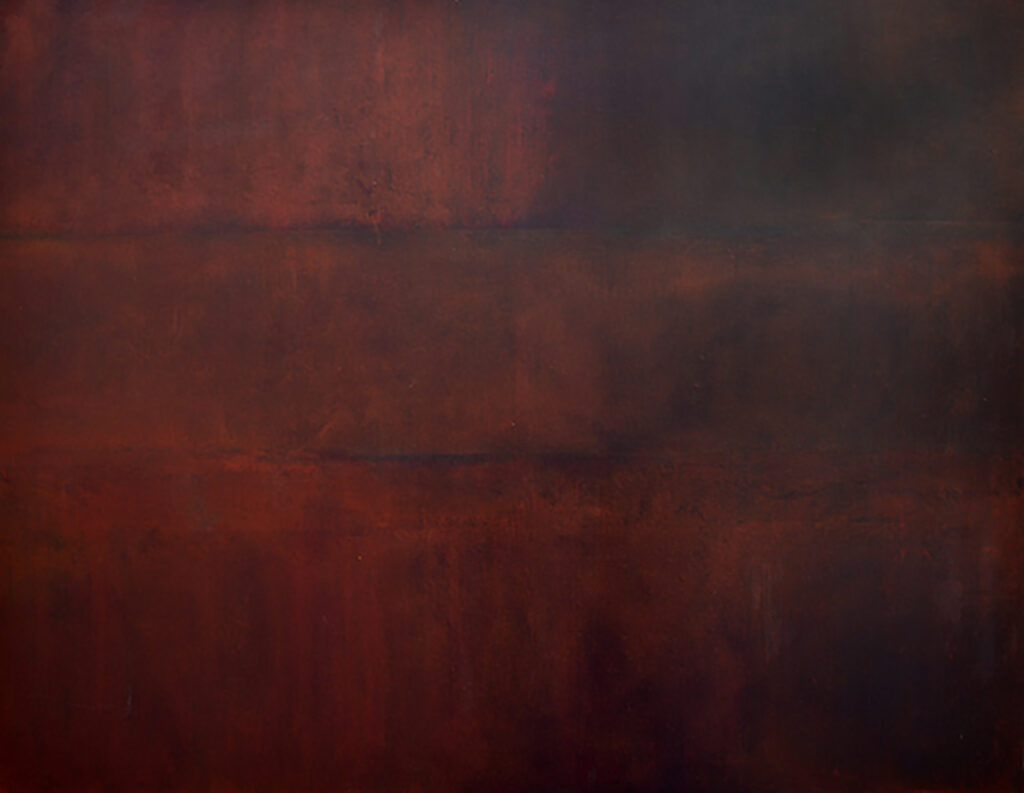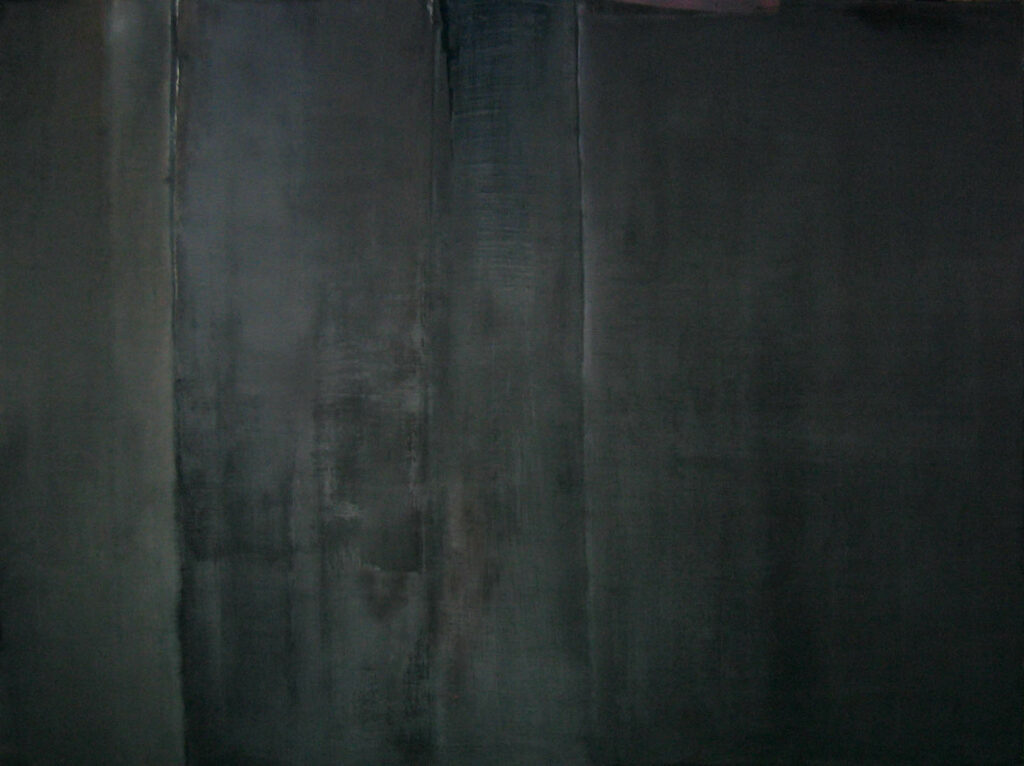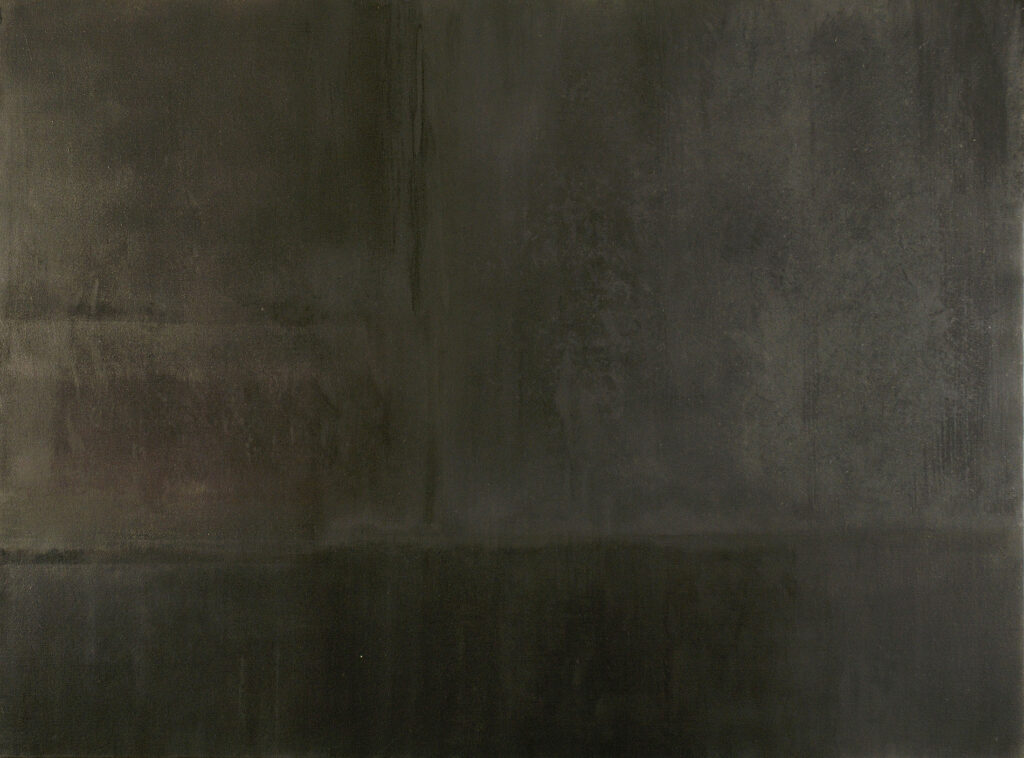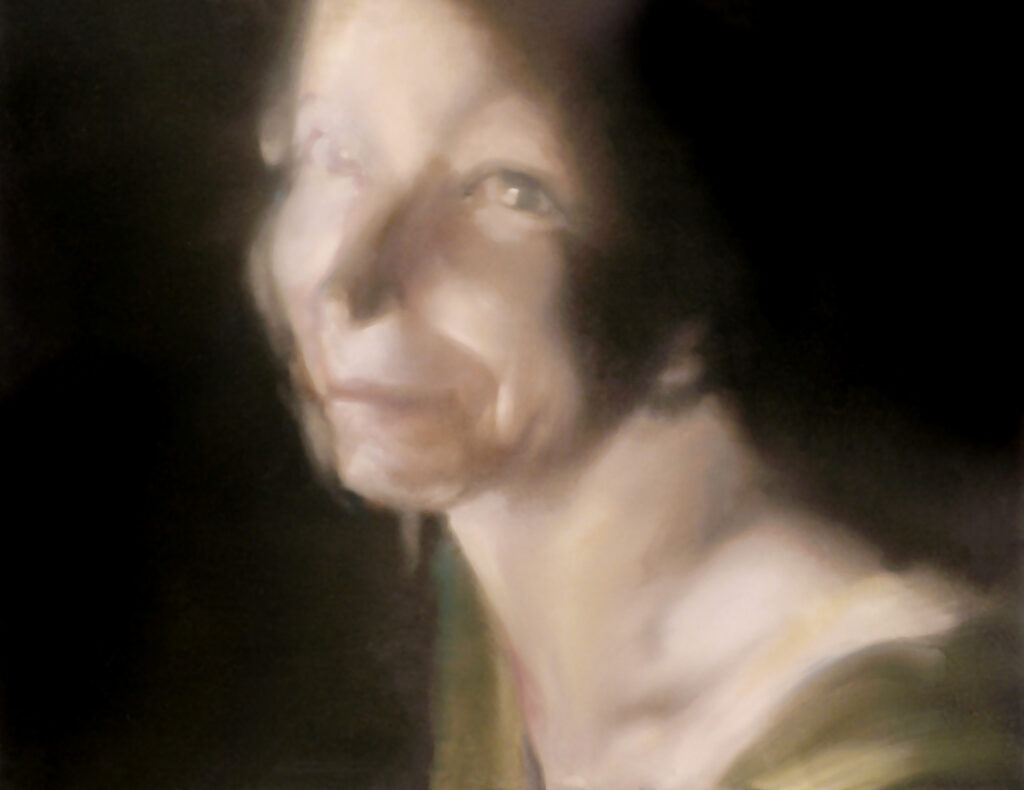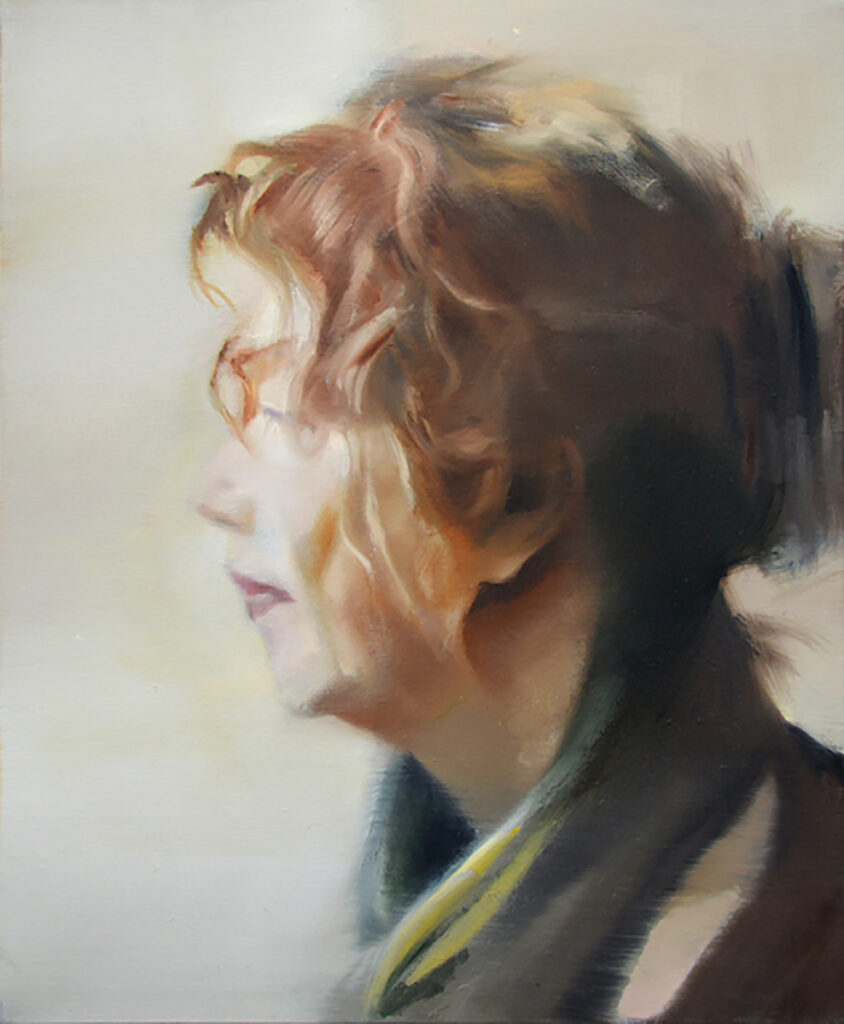Bayetto at the Entresol by Elisabeth Lebovici, June 2012
Bayetto, a self-taught painter who claims to have educated his gaze with images from books on the Renaissance, questions « beautiful painting » (it is he who says so) by its limits, those which end or indefinite the painting, which strike in the eye of the spectator because they catch the eye, trying to escape « the heavy, massive, stupidity, syntax » (Journal des Goncourt) of their content and form.
In the black-colored paintings he exhibits, the binder thus takes precedence over the pigment to push back the form and the content through vibration. Painting in oil, Bayetto uses and abuses glazing, a pictorial technique, which, according to Watelet’s Dictionary of Arts, Painting and Engraving (an article that « passes » from encyclopedia to encyclopedia): « signifies the effect that produces a transparent color that is applied (…) by rubbing another that is already placed and dry. The color with which we glaze must reveal what is underneath and give it a brighter, more colorful, finer tone (…). It is therefore a question, in a way, of glossing the color and Watelet, in 1792, recommends to use it only sparingly, preferring the solidity, physical and conceptual of the “full paste”. At Bayetto, the translucent or transparent veils become the full object of the work and not its finish. How does it feel to keep, almost, only the superimpositions, making a purely visual perception disappear under the stimuli of the surface?
Added to these questions is what Bayetto characterizes as the “otherness of the human figure” – figures coming from who knows where, indefinitely vibrating. No doubt this is for him a way of taking charge of their images at a time when most occurrences of photography are disappropriated, both from their authors and their models; by making them foreign, and thus by restoring to them a space and a time, floating, for desire or for melancholy. The painter also plays with gravity, not hesitating, for example, for the cardboard of his exhibition (below) to overturn a painting by 45°. This is also what appears in his most recent painting exhibited at the Entresol, where we can see, at the same time as a red background oscillating forwards, a standing man sniffing a dog so that the painting , depending on what you look at, always appears crooked. Way to fight, again, the limits of the table.
